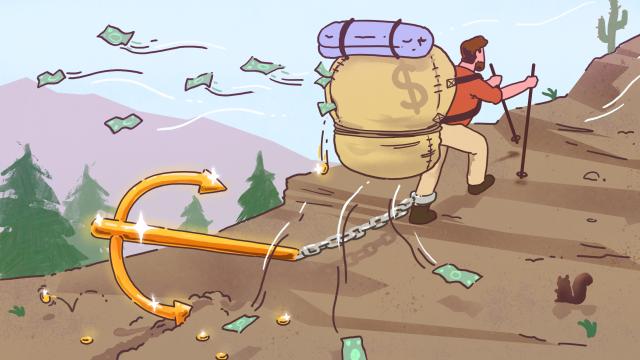I’ve always held the belief that cash really is king; after all, it’s important to have an easily accessible emergency fund to cover unexpected expenses. However, having excess cash beyond those six to nine months’ worth of expenses can mean missing out on major returns. I’ve recommended before that dividing your money into multiple accounts helps you see all your saving goals separately, so they’ll be easier to track and access for different reasons. The money set aside for emergencies goes to a different account than your dream vacation fund, and so on. And when it comes to anything beyond a few months’ worth of expenses, it’s more about understanding the opportunity cost of holding too much in cash.
Don’t miss out on compound growth
The power of compound growth is one of the most important principles in investing. When you leave money in cash, it doesn’t grow at the same rate as it would if that money was invested in the stock market or other assets. Over time, this lost growth can really add up.
For example, let’s say you have $US50,000 set aside for a down payment on a house you plan to buy in two to three years. If you keep that money in a savings account earning 1% interest, after three years it will have grown to about $US51,500. However, if you had invested that $US50,000 in a stock index fund that returned an average of 7% per year, it would have grown to over $US56,000—a difference of nearly $US5,000. That’s a significant amount of potential growth that you’d be missing out on.
Even if you don’t invest your money, you’ll still be missing out on growth if you only set aside your money in cash. Think about it like this: If you deposit $US500 into a run-of-the-mill savings account, you’ve earn $US0.50 in interest in one year. With a high-yield account with 2% APY, you will earn $US10 on that $US500—and with more time and more money, that interest adds up.
The key is to think about your time horizon. If you have money that you know you’ll need in the next two to three years, like for a down payment, a car purchase, or another major expense, it makes sense to keep that in a relatively stable, low-risk cash account. On that front: Here’s our guide to choosing a high-yield savings account.
When to choose investing versus savings
Prioritize low-risk cash accounts for saving money you may need to tap into any time in the next five years. Maybe you’ve set your sights on a vacation or down payment on a house, or perhaps you need to pad out your emergency fund.
For longer-term savings and investments, you’re usually better off putting that money to work in the market, where it can compound and grow over time. So while savings accounts are the choice for a short-term vehicle, you can turn to investing to meet your long-term goals, like stocking money away for retirement or to pay for your kids’ college.
The bottom line
I get it—when you’re focusing on your day-to-day finances, it’s all too easy to let your investments or savings goals take a back seat. However, the ideal approach is to have a solid emergency fund in cash, but then invest any additional cash beyond that. This allows you to earn higher returns while still maintaining sufficient liquidity. It just takes some planning to determine how much cash you truly need versus how much you can afford to invest for the long haul.

Leave a Reply
You must be logged in to post a comment.